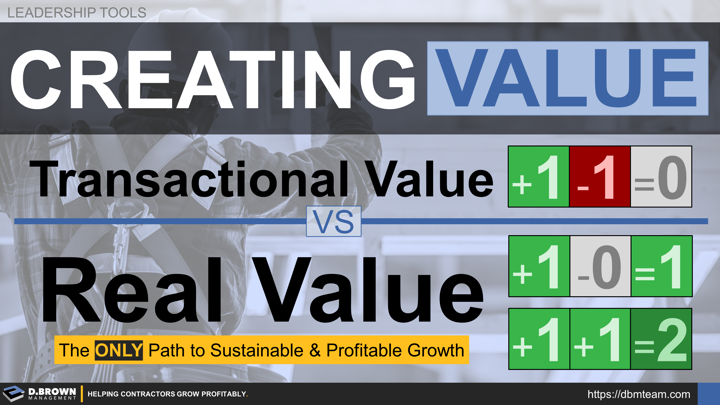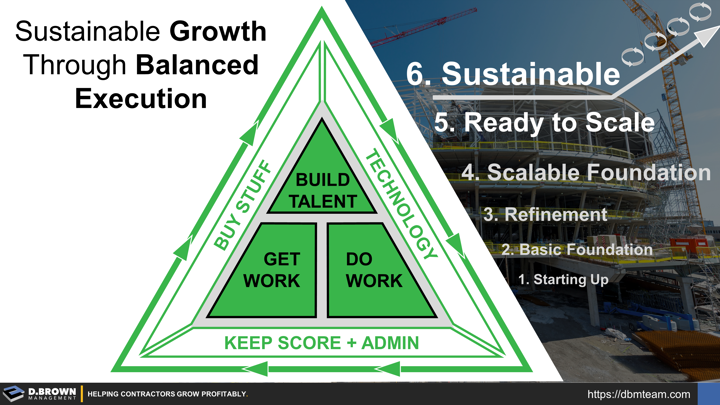Creating wealth and not just re-allocating it is the only path to truly sustainable and profitable growth over the long-term. Understand the differences and how to incorporate them into your strategy and planning.
Creating real value is a principle that works as effectively for careers as it does for companies. It must be at the heart of your market and operational strategies. Creating real value must be one of your core values and it must permeate every aspect of your culture, operating rhythms, and daily disciplines.
First, let's hit some basic assumptions and improvements:
- Assumption - You Are Competitive: Let's assume that your company delivers projects about as effectively as your competitors. Realize that most people think they are above average, which is statistically impossible. Most of the highest performers think they are below average. This cognitive bias is called the Dunning-Kruger Effect if you want to learn more. Don't over or underestimate your competitive positioning. Assume if you win 10-25% of the jobs you go after, and you make net profit margins that fits within your industry benchmarks, then you are average.
- Improve Your Sales Process: If you are competitive in your execution, assume that you can dramatically improve how effectively you market your company and work through the sales process to the point where you consistently win a higher percentage of projects and sell them for 1-2% more margin. This creates Transactional Value for your company and for those on the team. Every extra dollar you are able to bring into your company comes at an equal cost to your customer. +1-1=0
- Improve Your Project Delivery: Now let's assume that you can look at the Value Stream for your entire project delivery process, starting with preconstruction through all levels of field productivity, and eliminate waste while minimizing variability. By doing this, you can consistently deliver projects cheaper and faster with higher quality and safety, absolutely delighting customers.
Levels of Creating Real Value and Sustainable Growth
- Level 1: If you continue to sell projects to customers at normal competitive prices, then you have created Real Value for your company because you are making more for yourself while not costing your customers any more. +1-0=+1
- Level 2: If you are able to consistently deliver 10% more cost effectively than your competitors and you share some of that savings with the customer, then you have created a win-win situation. By being able to be competitively more cost effective, you will get far more work. This means that by managing your 9 Critical Talent Processes effectively, you will be able to grow your business much faster and create even more Real Value for you, your team, and your customers. +1+1=+2
- Level 3: If your market strategy focuses on building for project owners who are in the business of creating Real Value versus Transactional Value, and your operational capabilities help them grow their business faster, then you have guaranteed your growth over the long-term while helping many others. On the other hand, if their business is focused on creating Transactional Value, they may do great in some economic conditions but their growth is unlikely to be sustainable. +1+1+1=+3
- Level 4: If you openly share with others, including your competitors, then you can have an impact and improve the industry or a market as a whole. This is the ultimate in creating maximum Real Value. The risk is that the path to creating individual value for yourself isn't as clear as Level 1 or Level 2. However, rising tides lift all ships. There are very few examples of companies or individuals who have relentlessly focused on this level of creating Real Value all around who are not incredibly wealthy by all measures. +1+1+1+1+1.....
Sustainable Growth Through Balanced Execution
- Be aggressive with your business development and talent development.
- Be conservative and deliberate in your operational execution and financial management.
- Be effective in how you integrate your supporting operations, including technology and supply chains.
Creating Real Value is the only path.


